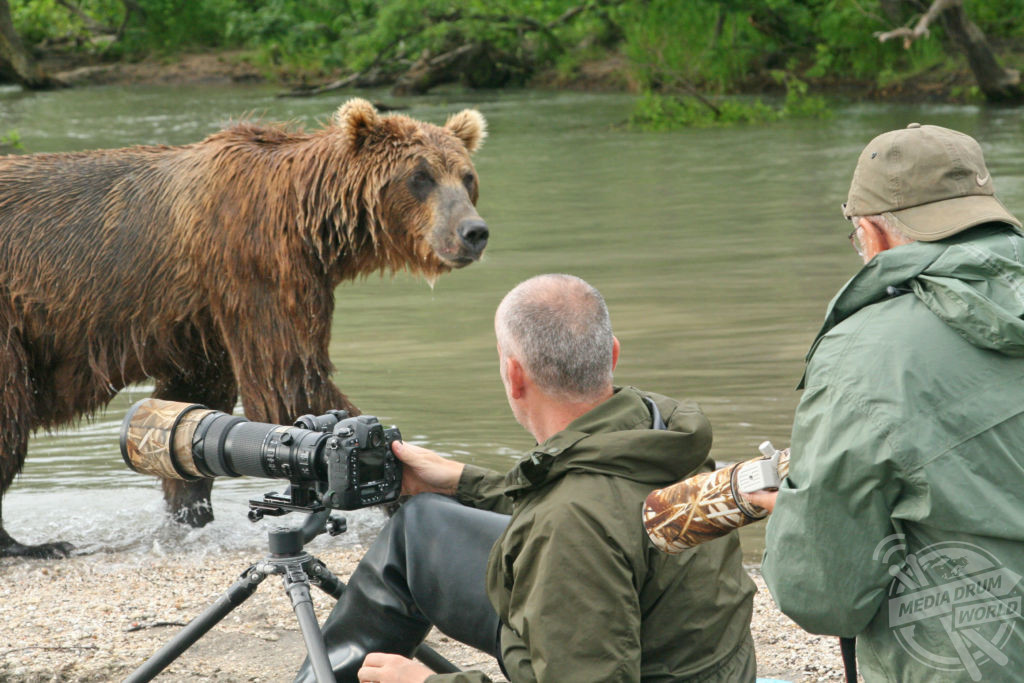
By Alex Jones
A REMARKABLE photo shows the “oh s**t” moment a huge 1,500-pound brown bear strolls just FIVE FEET in front of a startled photographer.
The stunning shot was captured by British pensioner Lynda Morten on a photography exhibition in Kamchatka, Russia as the huge grizzly bears feast on salmon just inches away from her guide, Andrew Parkinson.
Other stunning shots, taken by Lynda (68) and her 69-year-old husband Barry, show a mother bear pouncing on a salmon as her young cubs watch on anxiously, the ferocious bears forming a circle to trap doomed fish, and an adolescent bear about to tuck into the freshly caught and brightly coloured dinner.
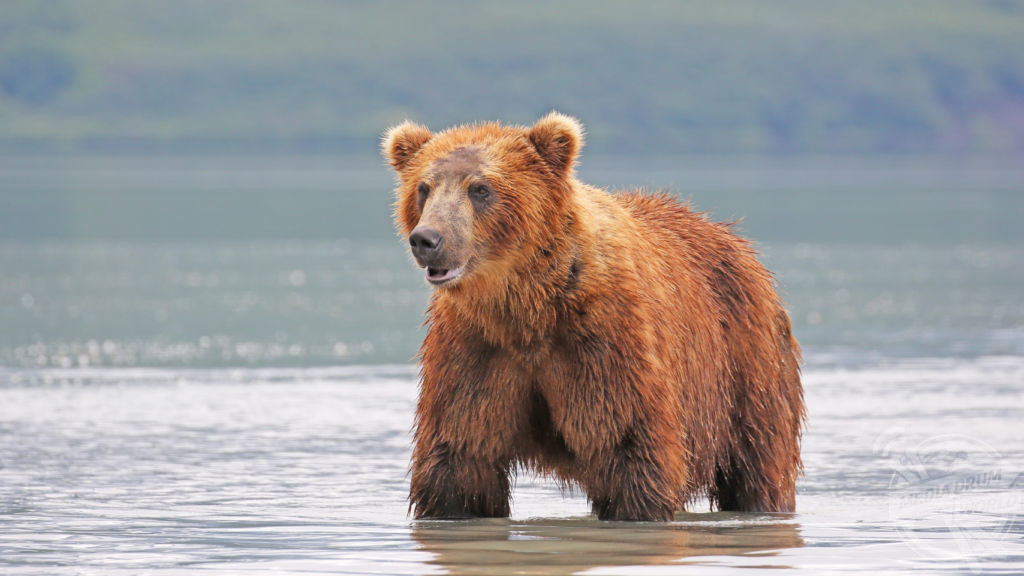
Photography guide Andrew Parkinson, who stars as the wincing photographer in the exceptional image, recalls the encounter with the mammoth bear vividly.
His group named the bear ‘Swag’ due to his cocksure nature and alpha status.
“I am in no way condoning or encouraging people getting close to bears, but this is simply a split second moment in time when a cheeky bear called Swag, named for a reason, decided to come a little too close to where I was sitting in Russia’s remote Kamchatka peninsula,” he explained.
“I was so engrossed in photographing this approaching bear that it was only when I could only see tiny parts of the bear through my lens that I thought ‘hmm, perhaps he is getting a little close’.
“Looking up from my camera this shot captures the exact moment that I recoiled slightly and for those in any doubt I was also muttering some quiet obscenities under my breath, along the lines of ‘oh s**t!’
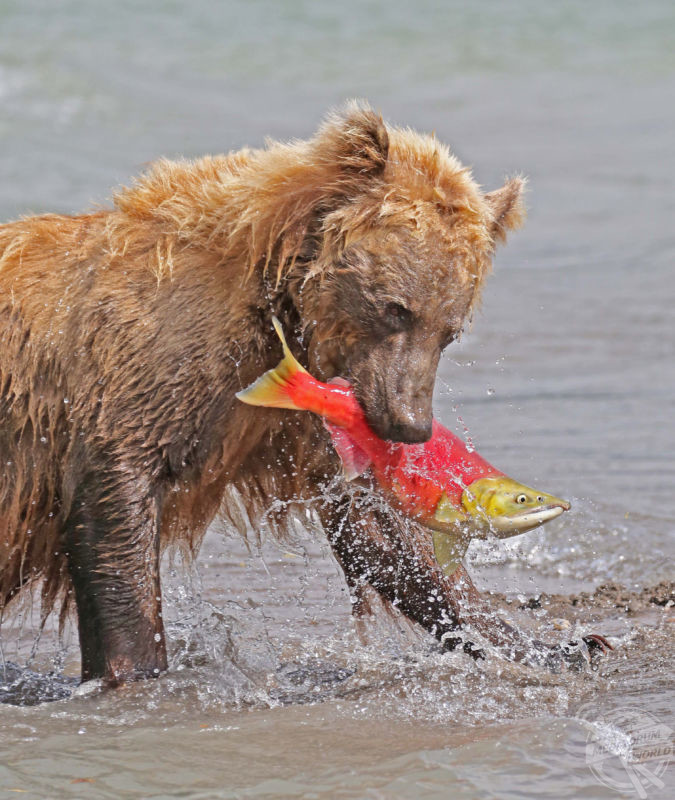
“Of course there will always be those that love to find a reason to criticise and whilst I would never advocate anyone getting anything like as close as I am in this moment I post this to illustrate that bears, so often maligned, are not monsters.
“Formidable predators they undoubtedly are, loving and protective mothers certainly, curious, gentle and inquisitive I cherish every moment that I’ve been privileged to spend with them.”
The once-in-a-lifetime photo was captured by Lynda and Barry Morten of Bracknell, a semi-retired couple who now travel the world pursuing their love of photography.
“I am the person standing next to Andrew in the picture,” explained Barry.
“My wife Lynda took the image because she could see the bear coming closer and closer each time he walked past and thought it would make a good picture. He came very close this time!

“The bear passed us about five feet away looking directly at Andrew and towering above us as we were kneeling down.
“We saw this bear quite a lot and called him Swag as he walked about as though he was the top bear and was extremely confident and not the slightest bit worried about the proximity of humans as we didn’t pose a threat to him.
“We were very close to the bears on many occasions and we never felt threatened by them.
“A couple of times the bears got too close and our guard would light a flare to scare them off and on one occasion fired a warning shot but the bears were not bothered and soon went back to catching salmon.
“Andrew was the ultimate professional and his dedication to the preservation of wildlife and love of animals is truly wonderful.”
Considered to be the ancestor of the Kodiak, the Kamchatka brown bears are dark in colour and the largest carnivores in Eurasia. They can reach imposing heights of nine or ten feet when standing.
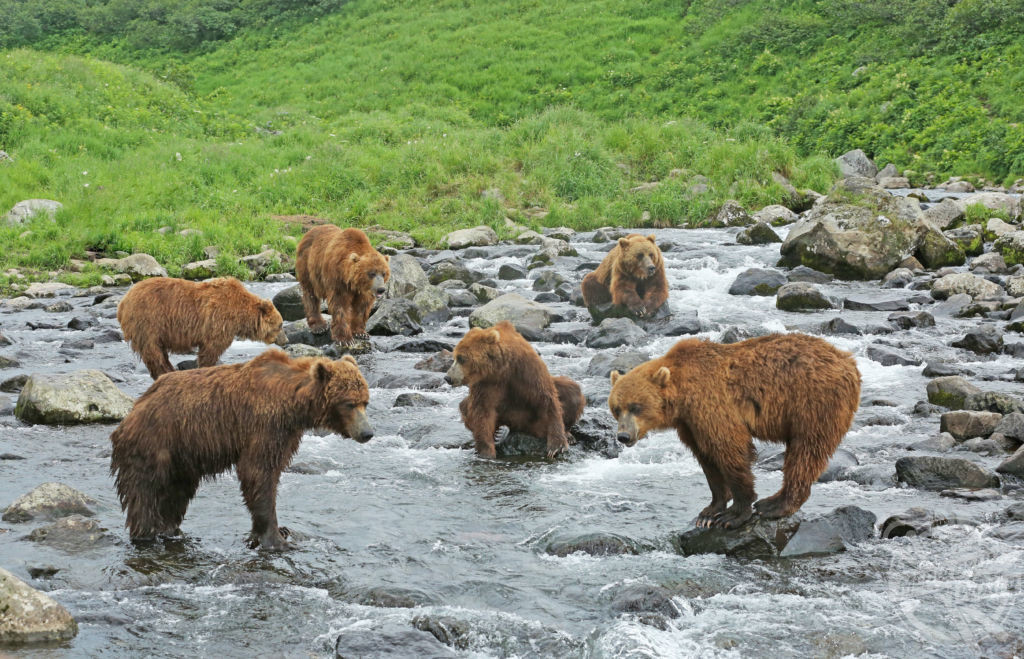
Although generally considered a gentle species which very rarely attack humans, there have been incidences of Russian bears killing humans.
The most famous case occurred in 2008 when 30 bears trapped a group of geologists at their remote survey site in the far east of Russia after killing two of their colleagues.
Many of the bears involved in the ‘siege’ were shot in the following days, mainly from long distance.
But capturing these beautiful animals in their own habitat is what drives the Mortens.
“After spending time up close and personal with the bears one cannot help but to be in awe of these wonderful creatures,” added Barry.
“It is inspiring and really motivates us to ensure that these type of wildlife experiences must not be allowed to disappear due to man’s intervention.
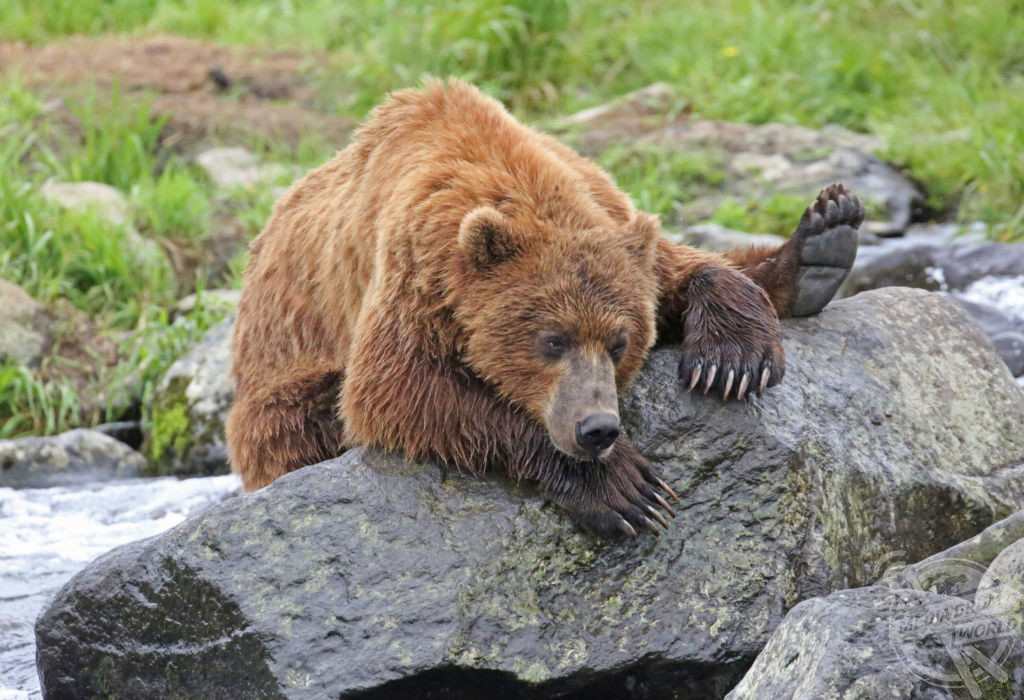
“We must continue to protect these pristine environments for future generations.
“Photographing wild animals in a pristine natural environment is the dream of all wildlife photographers.
“At this time of year, the bears come to the rivers and lakes of the area to feed on salmon which are returning to their place of birth to spawn and then die. The bears feed on the salmon to fatten up prior to hibernation.
“During this time, as the bears are completely focused on catching and eating the thousands of salmon that congregate in the rivers and lakes, it’s possible to get very close to the bears and capture amazing images.
“It’s an amazing experience to be very close to the bears and witness at first hand these incredible creatures who have immense power and strength.
“When people see our photos they can’t really believe how close we were to the bears and think we’re mad!”






